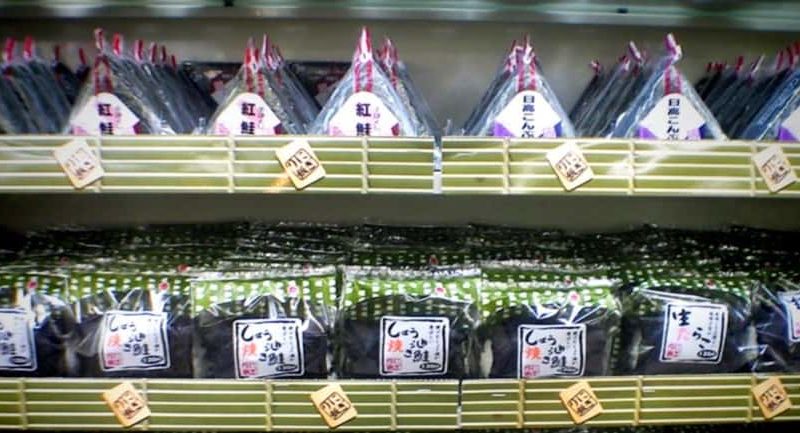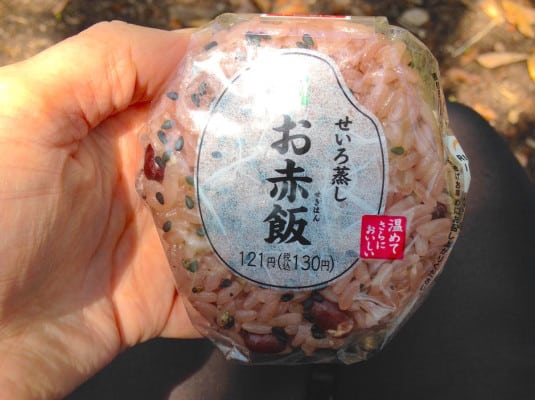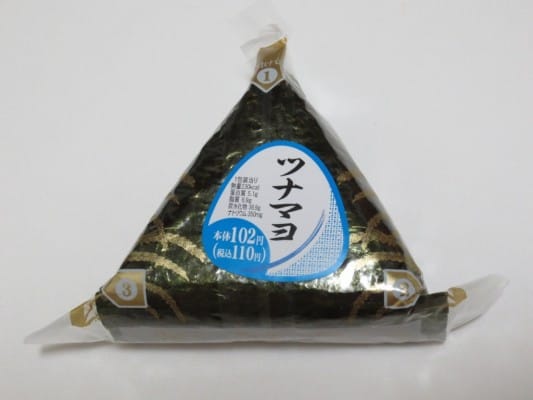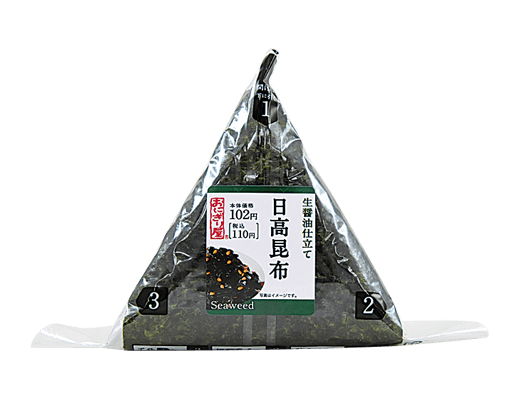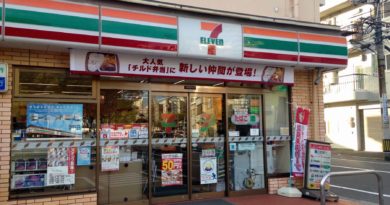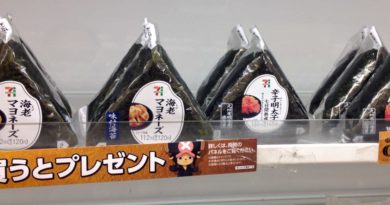Oishii Onigiri Part II
After our first look at the wonderful world of konbini [コンビニ] onigiri [おにぎり], lets get into the taste test. Before I begin, I must warn you… this week’s column is very biased towards 7-Eleven, but let me just assure you, I have tried all the equivalent onigiri at the other konbini chains; I just happen to prefer the taste of the ones from 7-Eleven.
Anyway, without further ado, let me introduce my favourite onigiri!
My top two are without a doubt, sekihan [赤飯] or red bean rice and inari-zushi (稲荷), which is fried tofu. Now some people would disagree that these are indeed onigiri because although they are balls of rice, they don’t have any actual filling in the middle. Sekihan is rice with small azuki beans scattered throughout and in the case of inari, the tofu is actually wrapped around the rice. I have included them here, however, because they are sold in the onigiri section and to my mind, they are worthy contenders.
7-Eleven’s o-sekihan is definitely the best of the best. It’s deliciously salty and each rice grain still manages to remain separate but stick together like it should. Family Mart’s version, on the other hand, is tasteless and has an almost gluggy consistency. It’s not bad as such, it’s just not good either.
Now, until this week my preference for inari was also 7-Eleven. That was, until I discovered that Family Mart now does a mean inari with wasabi [わさび] one. If your sinuses are clogged, try it, because it packs a punch and I guarantee you will be breathing freely for the rest of the day!
What would a discussion of onigiri be without mentioning tuna mayo? Yes, the favourite of kids, my mum and any foreigner who comes to Japan. 7-Eleven wins hands down here. Their mayonnaise tastes better and isn’t sickly sweet like the that from Family Mart. 7-Eleven actually does two different types of tuna mayo onigiri that I believe are the epitome of tuna mayo onigiri. The regular one is triangular shaped with nori enveloping the entire ball of rice, but there is also a round one with a strip of nori around the middle. The round one is my favorite of the two because there’s more mayonnaise and it reminds me of the type of mayonnaise they use at izakaya [居酒屋]. More creamy, they are definitely more fattening, but more delicious too.
I’m also a big fan of the sake-harami [さけハラミ] cooked salmon onigiri and although I usually get mine from 7-Eleven, the Family Mart one has a deeper, more salty taste and I’ve found is better for hangovers when that salt craving kicks in.
Kombu or konbu [昆布/こんぶ] is pretty much standard everywhere and to be honest, I really can’t distinguish one konbu onigiri from the other. It’s nice and simple and is good for the non-adventurous, or for those just dipping their toes into the whole onigiri experience.
Last, but definitely not least, is the plain, salted rice shio-musubi [塩むすび]. Again, I usually opt for the 7-Eleven one, but Lawson’s is actually the best. I’m not sure exactly what it is, but the rice seems more plump and juicy than at 7-Eleven. It seems more moist, whereas 7-Eleven’s one is quite dry. To me, the Family Mart rice is more like sushi rice, while the 7-Eleven one is just like normal rice that happens to be shaped into an onigiri.
Of course, I encourage you to try any of the above and also the others I haven’t mentioned. It’s quite fun if you can’t read any Japanese because it’s a surprise every time you bite into one! I would also recommend trying the seasonal variations on offer because sometimes they’re even better than the standards. A few months back, 7-Eleven had a seasonal inari with chunks of sweet potato. Oh dear God, it was good. Right now they have a ‘sakura’ [さくら] version with chicken, but it’s not half as good。
And that, ladies and gentlemen, is the complete guide to onigiri, so head on down to your local konbini and start taste-testing each and every one of them and let me know your favourites!


